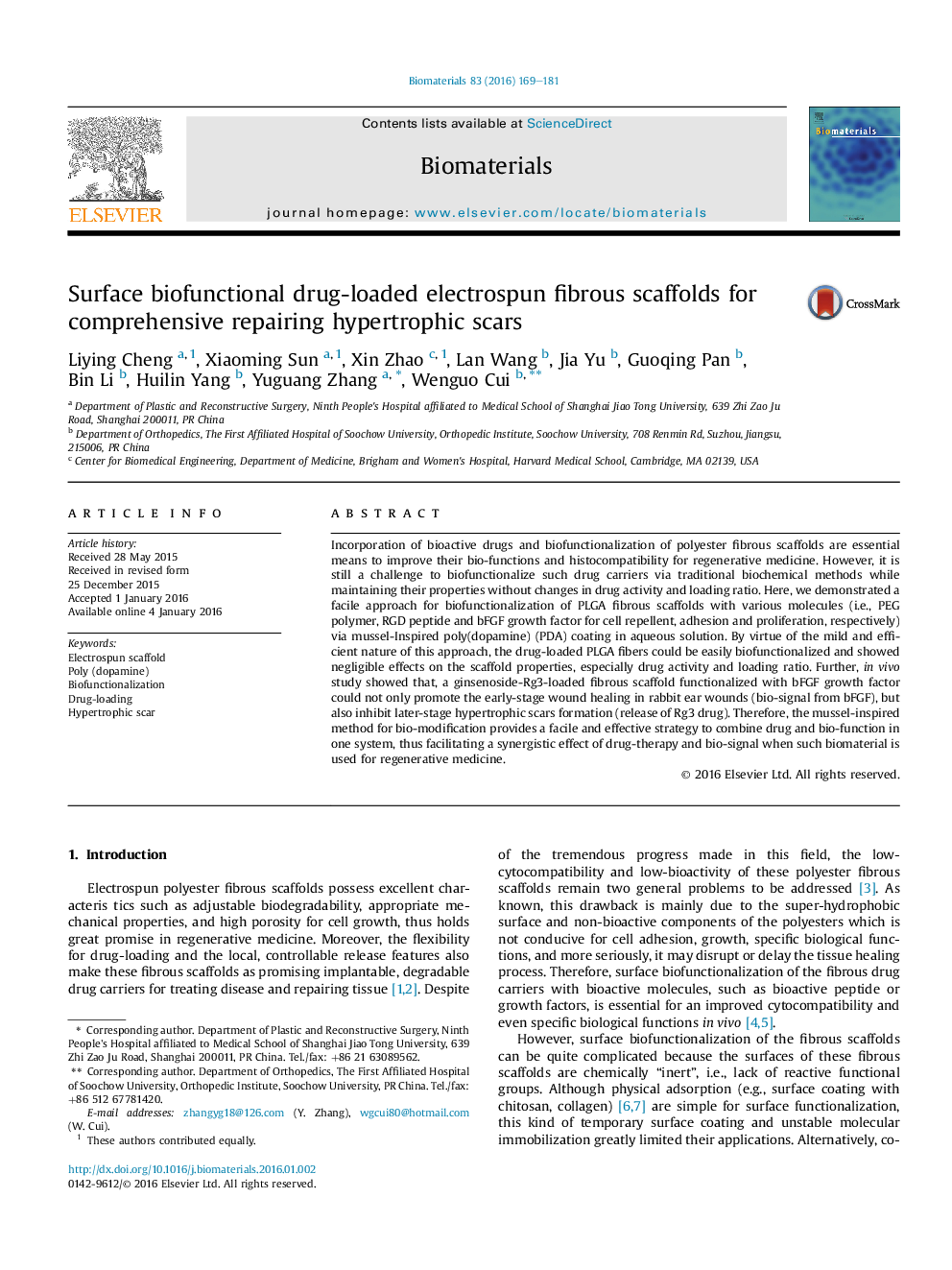| Article ID | Journal | Published Year | Pages | File Type |
|---|---|---|---|---|
| 6485115 | Biomaterials | 2016 | 13 Pages |
Abstract
Incorporation of bioactive drugs and biofunctionalization of polyester fibrous scaffolds are essential means to improve their bio-functions and histocompatibility for regenerative medicine. However, it is still a challenge to biofunctionalize such drug carriers via traditional biochemical methods while maintaining their properties without changes in drug activity and loading ratio. Here, we demonstrated a facile approach for biofunctionalization of PLGA fibrous scaffolds with various molecules (i.e., PEG polymer, RGD peptide and bFGF growth factor for cell repellent, adhesion and proliferation, respectively) via mussel-Inspired poly(dopamine) (PDA) coating in aqueous solution. By virtue of the mild and efficient nature of this approach, the drug-loaded PLGA fibers could be easily biofunctionalized and showed negligible effects on the scaffold properties, especially drug activity and loading ratio. Further, in vivo study showed that, a ginsenoside-Rg3-loaded fibrous scaffold functionalized with bFGF growth factor could not only promote the early-stage wound healing in rabbit ear wounds (bio-signal from bFGF), but also inhibit later-stage hypertrophic scars formation (release of Rg3 drug). Therefore, the mussel-inspired method for bio-modification provides a facile and effective strategy to combine drug and bio-function in one system, thus facilitating a synergistic effect of drug-therapy and bio-signal when such biomaterial is used for regenerative medicine.
Related Topics
Physical Sciences and Engineering
Chemical Engineering
Bioengineering
Authors
Liying Cheng, Xiaoming Sun, Xin Zhao, Lan Wang, Jia Yu, Guoqing Pan, Bin Li, Huilin Yang, Yuguang Zhang, Wenguo Cui,
